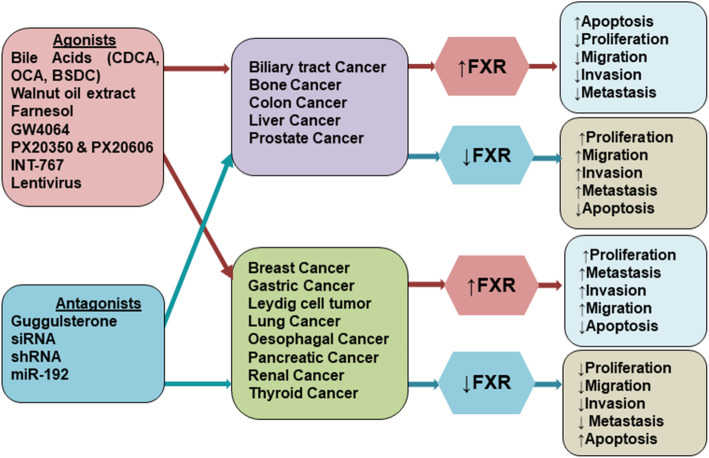Fig. 3.
Role of agonists and antagonists in different cancers. The FXR is downregulated as compared to basal level in colon, liver, prostate, bone and biliary tract cancers and the treatment with FXR agonists increase the expression of FXR that leads to inhibition in proliferation, migration, and invasion of cancer cells, and induction of apoptosis. While in other cancers with overexpressed FXR such as breast, gastric, Leydig cell, lung, oesophagal, pancreatic, renal and thyroid cancers, the treatment with agonists increases FXR that results in high proliferation, migration, and invasion, and suppression of apoptosis of cancer cells. Conversely, the treatment with FXR antagonists in FXR-downregulated cancers, it further decreases the expression of FXR that results in induction of proliferation, migration, and invasion, and inhibition of apoptosis. While in FXR-overexpressed cancers, the treatment with antagonists inhibits FXR and decreases the proliferation, migration, and invasion, and induces apoptosis

